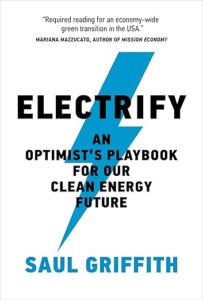Part 1 covered the data on greenhouse gas emissions and temperature, and the Intergovernmental Panel on Climate Change recommendation.
Part 2 covered the dire health impacts.
Part 3 is a brief look at the costs of climate change.
**********************************As the world warms due to climate change, everyone is paying the financial price. This post will provide just a few examples.
In the US, this chart from the National Oceanic and Atmospheric Administration (NOAA) shows how dramatically the number of billion-dollar disasters has risen since the 1980s and 90s. Inflation is adjusted for, so the numbers should otherwise be comparable. Who pays these costs? We all do: in higher state, local, and federal taxes, in higher costs for food and goods, and in higher health and property insurance premiums (passed along in rent increases for those on leases).

https://www.ncei.noaa.gov/access/billions/time-series
Noted on this NOAA webpage: “In alignment with evolving priorities, statutory mandates, and staffing changes, NOAA’s National Centers for Environmental Information (NCEI) will no longer be updating the Billion Dollar Weather and Climate Disasters product.”
Because of the increase in the number of climate change-driven disasters, major insurance companies are now limiting their coverage in states like Florida, Louisiana, North Carolina, California, and others. At the same time, some of the same insurance giants are continuing to insure/invest in the fossil fuel development projects that are fueling the disasters leading them to withdraw. (See the New York Times article at the link below.)
What about the global financial impacts? I’ll give an example from the World Resources Institute, a large, respected nonprofit that works on the Great Transition to sustainability in over 50 nations. (I frequently recommend their e-newsletter on climate change, which offers good news as well as bad.) The WRI cited a recent report (link below) on economic impacts in vulnerable developing nations over the first two decades of the 21st century. The analysis found that these low-income nations had already lost $525 billion due to climate change – climate change that they did almost nothing to cause.

Part of the frustration felt by many is the fact that renewables have for a number of years been the cheapest form of new energy around the world, and frequently the cheapest form of energy, period. So moving faster with the Great Transition saves trillions of dollars as well as millions of lives. (Yale Climate Connections post below, with citations)
My annotated climate change book list is a source of useful reading suggestions. From Paul Hawken’s (2021) Regeneration: Ending the Climate Crisis in One Generation, I provide this memorable quote: “Since the Paris Agreement was signed in 2015, the banking industry has loaned and invested more than 3.8 trillion in the oil and gas industry, more than enough money to retrofit every building in America to be a zero-waste structure. The energy saved would exceed the amount gained by oil and gas exploration by a factor of ten.” Meanwhile, fossil fuels continue to be heavily subsidized by governments around the world, including the United States – far more than renewables. (International Monetary Fund citation below)
For more context on the financial impacts of climate change, some of the other books on my annotated recommended list are helpful. Many include consideration of current and projected costs and savings at different levels of climate action (or inaction). Here’s a few that would serve as good introductions, in my view:
Greta Thunberg & team’s edited (2023) The Climate Book
Paul Behrens’ (2020) The Best of Times, The Worst of Times: Futures from the Frontiers of Climate Science
Cullenward & Victor’s (2020) Making Climate Policy Work
Saul Griffith’s (2021) Electrify: An Optimist’s Playbook for our Clean Energy Future
*link to my annotated book list
There’s a hopeful message in here: Once we do get further along in the Great Transition to sustainability, we will see lots of financial savings.


Report cited by World Resources Institute: “Climate Vulnerable Economies Loss Report: Economic Losses Attributable to Climate Change in V20 Economies in the last Two Decades (2000-2019)”
https://www.v-20.org/wp-content/uploads/2022/06/Climate-Vulnerable-Economies-Loss-Report_June-14_compressed-1.pdf
https://www.nytimes.com/interactive/2024/12/18/climate/insurance-nonrenewal-rates-policies-state-map.html
“See Where Home Insurance Policies Were Dropped in Your State” – Dec 18, 2024.
International Monetary Fund report:
https://www.imf.org/en/Topics/climate-change/energy-subsidies
Yale Climate Communications post on the cost savings from climate action:
